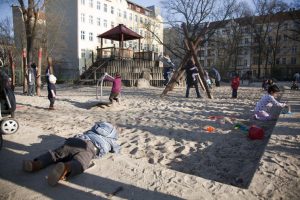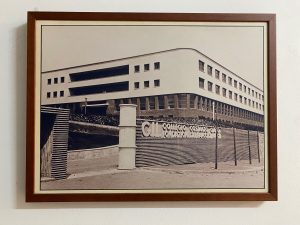WHERE AND WHEN?
Lausitzer Strasse 10-11, Kreuzberg, Berlin, Germany.
2019-2021
WHAT’S GOING ON?
Similarly to other cases in the district, the Lause is being threatened by the possibility of an unaffordable rent increase due to the intention of the owner to sell the building to the highest bidder, by around 20 million euros – an increase of 800% in the price by which he bought it from the municipality back in 2007, then governed by a coalition of the Social Democratic Party (SPD) and The Left (Die Linke).
The building in the last years has been used for both residential and commercial uses, and so its inhabitants vary from families, to craftspeople, to media and artistic collectives, political initiatives and NGOs among others, whose activities and work are deeply rooted in the neighbourhood’s fabric.
Following the threat of being displaced from their home, the inhabitants of the Lause understood that in order to contest gentrification they needed to collectively self-organise. Based on principles of solidarity and community building, the Lause engaged in a journey marked by the frenetic and chaotic rhythm that tight schedules and exhausting negotiations impose, but also with the patient tempo that creating durable emotional ties require, in order to create an open and non-commercialized space born from the bottom up and for the community.
The Lause is affected by the effects of the financialization of housing and the contradictions of urban development strategies that aim to promote creativity and innovation but do not protect grassroot, sustainable and already established ecosystems of creativity.
INFO & LINKS
The case of the Lause is part of the research conducted for the Co-creation H2020 project.
Case study developed by Luis Miguel Benavides Cabrejo luismi@tesserae.eu


